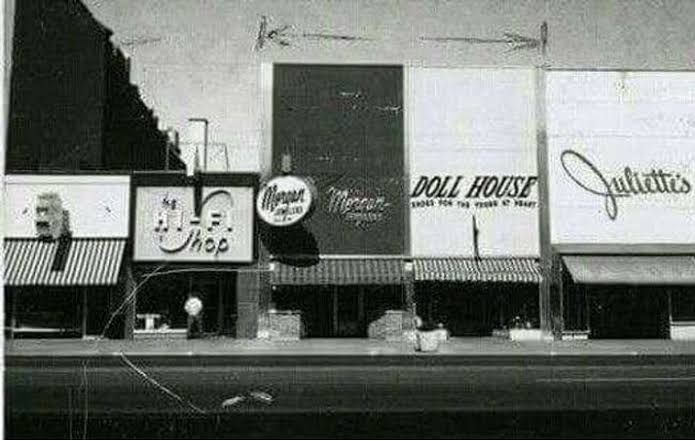
On April 22, 1974, at the Hi-Fi Shop in Ogden, Utah, five people were taken hostage just before closing time. What started as a robbery quickly turned violent. The intruders forced their hostages to drink corrosive drain cleaner, believing it would kill them. It didn’t. Instead, it caused severe burns to their mouths and throats.
The violence didn’t end there. A pen was driven into a victim’s ear. An eighteen-year-old woman was assaulted. By the end of the night, three of the hostages were dead. Two survived but were left with permanent injuries.
The investigation led to three men: Dale Selby Pierre, William Andrews, and Keith Roberts. They were all enlisted airmen in the United States Air Force. Pierre and Andrews were sentenced to death for murder and aggravated robbery. They were later executed. Roberts, who stayed in the getaway vehicle, was convicted of robbery and received a lesser sentence.
Three others involved were never caught. The case also sparked allegations of racial bias in Utah’s judicial system, adding controversy to an already brutal crime.
The full story of that night was far from over.
The Planned Robbery at the Hi-Fi Shop
On April 22, 1974, six men drove to the Hi-Fi Shop at 2323 Washington Boulevard in Ogden, Utah. It was just before closing time. They arrived in two vans, ready to carry out a robbery. Four of them entered the store with handguns, while Keith Roberts and another man stayed with the vehicles outside.
Inside the store, two employees were finishing their shifts. Stanley Walker, aged 20, and Michelle Ansley, aged 18, were taken by surprise. They were forced into the basement, where they were tied up. The robbers then began looting the store, loading audio equipment into the vans.
About an hour later, sixteen-year-old Cortney Naisbitt entered the store. He had come to thank Stanley Walker for letting him park his car there earlier. He had no idea what was happening inside. The robbers took him hostage too, tying him up in the basement with Walker and Ansley.
Later that evening, Stanley’s father, Orren Walker, grew concerned when his son didn’t come home. He went to the store to check on him. Around the same time, Carol Naisbitt arrived, looking for her son, Cortney. Both were taken hostage and tied up in the basement.
There were now five hostages in the basement, unaware of the horrors that were about to follow.
Torture, Rape, and Murder in the Hi-Fi Shop Basement
With five hostages now tied up in the basement, Dale Selby Pierre ordered William Andrews to retrieve something from their van. Andrews returned holding a brown paper bag. Inside was a bottle of Drano, a corrosive drain cleaner.
Pierre poured a cup of the liquid and demanded that Orren Walker give it to the others. Orren refused. He was then gagged, bound, and forced face-down on the floor.
Pierre and Andrews then positioned the other hostages upright. They told them the liquid was vodka mixed with sleeping pills and forced each of them to drink it. The effect was immediate and horrifying.
The Drano burned their lips, blistered their tongues, and tore away the skin around their mouths. Their screams filled the basement.
Michelle Ansley pleaded for her life, but her cries went unheard. Pierre and Andrews tried to silence the hostages by taping their mouths shut, but the blistering skin prevented the tape from sticking.
Orren was the last one forced to drink. He watched the others convulse in agony and let the Drano spill from his mouth. Then, to survive, he faked the same convulsions and screams as the others.
Pierre grew frustrated. The poison wasn’t working as planned. It was loud, slow, and messy. He pulled out his gun and shot Carol Naisbitt and her son, Cortney, in the backs of their heads.
Carol died instantly, but Cortney survived. Pierre then turned to Stanley Walker and killed him with a shot to the head. He fired at Orren twice, missing once and grazing his head the second time.
Then Pierre dragged Michelle to the corner of the basement. He ordered Andrews to leave and then raped her repeatedly. When he was done, he let her use the bathroom under his watch.
Afterward, he brought her back to the others, threw her to the ground, and shot her in the head. Her last words were, “I am too young to die.”
Pierre and Andrews realized Orren was still alive. Pierre tried to strangle him with a wire but failed. He then jammed a ballpoint pen into Orren’s ear and stomped on it until it broke through his eardrum and exited his throat.
Believing all the hostages were dead, they went upstairs, loaded the stolen equipment into their van, and left.
The basement fell silent, but the nightmare wasn’t over.
Who Were the Victims of the Hi-Fi Murders?
The victims of the Hi-Fi Shop murders included five individuals, three of whom lost their lives. Each of them was bound, forced to drink Drano, and later shot. Despite the brutality, two survived, but their lives were changed forever.
Sherry Michelle Ansley was just 18 years old. She had been working at the Hi-Fi Shop for only a week. Recently engaged, she was planning to get married on August 5, 1974. Her life was brutally cut short. Pierre took her to a corner of the basement, raped her, and then shot her. Her last words were, “I am too young to die.”
Byron Cortney Naisbitt was 16 at the time. A student at Ogden High School, he had only stopped by the shop to thank Stanley Walker for letting him park there. Cortney survived but suffered brain damage and amnesia, preventing him from testifying at the trial.
Despite returning to school and graduating in 1976, he struggled with chronic pain and cognitive issues. He married Catherine Hunter in 1985 but continued to face health challenges. Cortney died on June 4, 2002, at the age of 44.
Carol Elaine Naisbitt, Cortney’s mother, was 52 years old. She had come to the shop looking for her son. Pierre shot her in the head, and she died at the hospital. Her death left her family shattered.
Orren William Walker was 43 and the father of Stanley Walker. He was tortured but survived, enduring horrific injuries. He testified at the trial, ensuring justice was served. He passed away on February 13, 2000, at the age of 69.
Stanley Orren Walker, 20, was working at the Hi-Fi Shop that night. He was the first employee taken hostage. Pierre shot and killed him in the basement, ending his life before it had truly begun.
These were the lives impacted by that night’s violence—some lost, some forever changed. But the story didn’t end there.
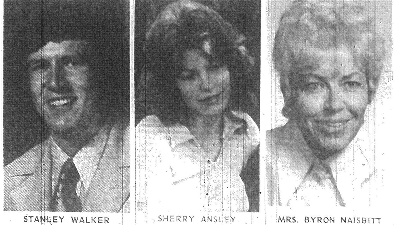
What Happened During the Hi-Fi Murders Trial?
Almost three hours after the robbers left, the bodies were discovered. Orren Walker’s wife and his other son went to the Hi-Fi Shop, worried about their loved ones. When they arrived, they heard faint noises coming from the basement.
Orren’s son broke down the back door while his mother called the Ogden police.
Inside the basement, they found a scene of horror. Stanley Walker and Michelle Ansley were already dead. Carol Naisbitt was still alive but unresponsive. She was rushed to St. Benedict’s Hospital but was pronounced dead on arrival.
Sixteen-year-old Cortney Naisbitt, though critically injured and not expected to survive, clung to life. He suffered severe brain damage and spent 266 days in the hospital before he was released.
Orren Walker survived but with devastating injuries. His mouth and chin were severely burned by the Drano, and his ear was permanently damaged by the pen.
Despite his pain, Orren provided the police with a detailed description of the attackers. He remembered the man who fired the shots—a short, bespectacled man with a Caribbean accent. That man was later identified as Dale Selby Pierre.
The investigation took a turn when an anonymous Air Force employee called the police. He revealed that William Andrews had told him months earlier, “One of these days I’m going to rob that Hi-Fi shop, and if anybody gets in the way, I’m going to kill them.”
Just hours later, two teenage boys scavenging through a dumpster at Hill Air Force Base found the victims’ wallets and purses. They recognized the faces from the driver’s licenses and contacted the police.
Detective Deloy White arrived at the scene, suspecting that the killers might be among the gathered onlookers. Using a clever tactic, he dramatically displayed each piece of evidence he pulled from the dumpster.
Most of the airmen watched silently, but two men behaved differently. They paced nervously, speaking loudly and gesturing frantically. Those men were later identified as Pierre and Andrews.
Their suspicious behavior was enough to bring them in for questioning. With this lead, the police obtained a search warrant for their barracks. Inside, they found fliers for the Hi-Fi Shop and a rental contract for a public storage unit.
Upon searching the storage unit, they recovered the stolen stereo equipment, identified by serial numbers, and the half-empty bottle of Drano used in the attack.
A few weeks later, Keith Roberts, another airman, was also arrested. He had been identified as a participant in the robbery during questioning on the base.
The pieces were falling into place, but the story was far from over
Convictions
Dale Selby Pierre, William Andrews, and Keith Roberts were charged with first-degree murder and aggravated robbery. Their joint trial began on October 15, 1974, in Farmington, Utah. It was a high-profile case that gripped the community.
On November 16, 1974, the verdict was delivered. Pierre and Andrews were found guilty on all charges, including murder and aggravated robbery.
Four days later, they were sentenced to death. Keith Roberts, who had remained outside in the getaway vehicle, was convicted of robbery. He received a sentence of five years to life in prison and was paroled in 1987.
During the trial, evidence revealed that Pierre and Andrews had planned not only to rob the store but also to kill anyone they encountered. In the months leading up to the crime, they searched for ways to kill quietly and efficiently.
They watched the movie Magnum Force multiple times, focusing on a scene where a character is forced to drink Drano and dies instantly. Believing this method to be effective, they decided to use it in their crime.
The prosecution’s key witness was Orren Walker, who survived the attack despite severe injuries. His testimony was crucial in detailing the events of that night.
Cortney Naisbitt, another survivor, was unable to testify due to memory loss caused by his brain injuries. His father, Byron Naisbitt, took the stand instead, sharing the impact the crime had on his family.
The trial exposed the cold and calculated nature of the crime. But the story didn’t end with the verdict.
Why Were the Hi-Fi Murders So Controversial? Appeals and Aftermath Explained
The official police report stated that six men were involved in the Hi-Fi Shop robbery. They arrived in two vans. Keith Roberts and another man stayed with the vehicles, two others loaded the stolen equipment, while Dale Selby Pierre and William Andrews tortured and killed the hostages.
Despite knowing the involvement of six individuals, detectives only had enough evidence to convict Pierre, Andrews, and Roberts.
Detective Deloy White, who led the investigation, described Andrews as “the brains behind the whole deal,” and Pierre as “the enforcer.” Andrews later admitted to targeting the store after meeting Stanley Walker months before the crime but blamed Pierre for the excessive violence.
Dale Selby Pierre
Dale Selby Pierre was 21 years old at the time of the crime. Born on January 21, 1953, near Mason Hall, Tobago, he moved to Brooklyn, New York, at 17. In May 1973, Pierre joined the United States Air Force and was stationed at Hill Air Force Base as a helicopter mechanic.
Shortly after his arrival, he became the prime suspect in the murder of Air Force Sergeant Edward Jefferson but was never charged due to a lack of evidence. At the time of the Hi-Fi murders, Pierre was out on bail for car theft.
On November 16, 1974, Pierre was convicted of three counts of first-degree murder and two counts of aggravated robbery. He received three death sentences, one for each murder victim.
During his time in prison, Pierre changed his name 27 times to protect his family from the notoriety. He eventually settled on the name “Pierre Dale Selby” by transposing his first, middle, and last names.
Pierre was executed by lethal injection on August 28, 1987, at the age of 34. He spent his final day fasting, praying, singing hymns, and reading the Bible. His last words were, “Thank you, I’m just going to say my prayers.”
Moments before his execution, he was heard saying, “I’ll be glad when this is over.” He left behind $29, which he bequeathed to Andrews.
During his clemency hearing, Pierre claimed the crime had not gone as planned. He blamed drugs and alcohol for clouding his judgment but ultimately took responsibility, saying, “You did it, you were there. You can’t rationalize it.” Survivor Orren Walker testified against him, calling Pierre a sadist who “deserved to die.”
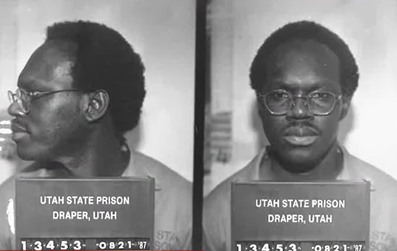
William Andrews
William Andrews was 19 years old at the time of the crime. Like Pierre, he was a helicopter mechanic at Hill Air Force Base. Born in Jonesboro, Louisiana, he had been stationed in Dallas before moving to Utah.
During the trial, it was revealed that Andrews and Pierre had planned to kill anyone they encountered during the robbery.
On November 16, 1974, Andrews was convicted of three counts of first-degree murder and two counts of aggravated robbery. Although he did not directly kill any of the victims, he admitted to forcing them to drink Drano.
He received three death sentences. His case became controversial because of his role as an accomplice rather than a direct killer. Despite repeated appeals, his execution date was set for August 22, 1989, but he received multiple stays from the 10th Circuit Court of Appeals.
On July 30, 1992, Andrews was executed by lethal injection at the age of 37, after 18 years on death row. His last meal was a banana split, shared with his niece and sister. His final words were, “Thank those who tried so hard to keep me alive. I hope they continue to fight for equal justice after I’m gone.”
After being strapped to the gurney, Andrews said goodbye to his sister before the injections were administered. He was pronounced dead at 1:46 a.m.
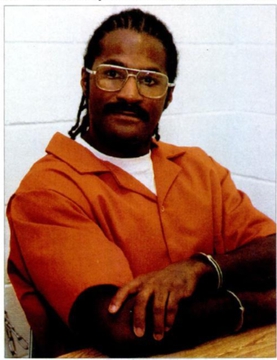
Keith Leon Roberts
Keith Leon Roberts was 19 years old during the robbery. Born on January 5, 1954, in Lawton, Oklahoma, he was married with an infant son at the time of his arrest. He initially denied any involvement but later admitted to acting as the getaway driver. He claimed he didn’t know anyone would be in the store during the robbery.
Roberts was acquitted of murder after the court found no evidence that he had knowledge of the planned killings. However, he was convicted of two counts of aggravated robbery and sentenced to five years to life. He was paroled on May 12, 1987, after serving nearly 13 years in prison. He moved to Chandler, Oklahoma, and worked at an electronic store.
On August 8, 1992, just a week after Andrews’ execution, Roberts died by suicide. He was 38 years old. His death marked the final chapter in the lives of the three men convicted in one of Utah’s most brutal crimes.
But the story wasn’t over yet. The appeals and aftermath would reveal even more about the impact of that night.
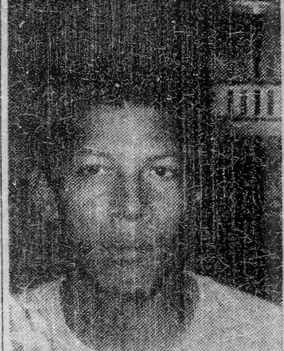
How Did the Hi-Fi Murders Impact History and Pop Culture?
Following the death sentences handed down to Dale Selby Pierre and William Andrews, controversy erupted. The NAACP and Amnesty International launched campaigns to have their sentences commuted. They argued that racial bias had tainted the trial, pointing out that both defendants were black, while all the victims and jurors were white.
According to Amnesty International, the only black member of the jury pool was dismissed by the prosecution. However, it was later revealed that the dismissed juror was a law enforcement officer who knew several people involved in the case.
William Andrews publicly accused the judicial system of racism, echoing the concerns raised by the NAACP. A letter from a representative of Pope John Paul II, supported by 40 clergy members from Utah, requested clemency for Andrews. However, the Church of Jesus Christ of Latter-day Saints did not endorse the request.
After Pierre’s execution in 1987, Andrews continued to fight his sentence. His lawyers submitted a petition to the Inter-American Commission on Human Rights, alleging racial bias. They presented evidence of a handwritten note found in the jury area that read, “hang the niggers.”
Andrews’ defense team argued that the judge’s refusal to declare a mistrial or question the jurors about the note violated his right to a fair trial. The note itself was never found, and its origins remain unknown.
The petition also revealed that the jury had been sequestered during the trial and regularly taken to a café in Bountiful, Utah, where the note was allegedly found on a napkin. Despite these allegations and appeals, both death sentences were upheld.
In December 1996, the Inter-American Commission concluded that the United States had violated international obligations by denying William Andrews a trial free from racial discrimination.
Legacy of the Hi-Fi Murders
The Hi-Fi murders left a lasting impact on law enforcement and popular culture. The FBI incorporated the case into its training curriculum at the FBI Academy in Quantico, Virginia. It was also included in the FBI’s Crime Classification Manual as a sample case study.
The case deeply affected the survivors and the families of the victims. The experiences of Cortney Naisbitt and his family were documented in Gary Kinder’s book, Victim: The Other Side of Murder, published in 1982. The book offered an in-depth look at the crime’s aftermath and its impact on the community.
In 1991, CBS adapted the story into a television movie, Aftermath: A Test of Love, starring Richard Chamberlain and Michael Learned. The film depicted the emotional toll on the victims’ families and highlighted the lasting trauma caused by the crime.
The Hi-Fi murders remain one of Utah’s most brutal crimes, remembered not only for the violence but also for the questions it raised about justice and racial bias.





